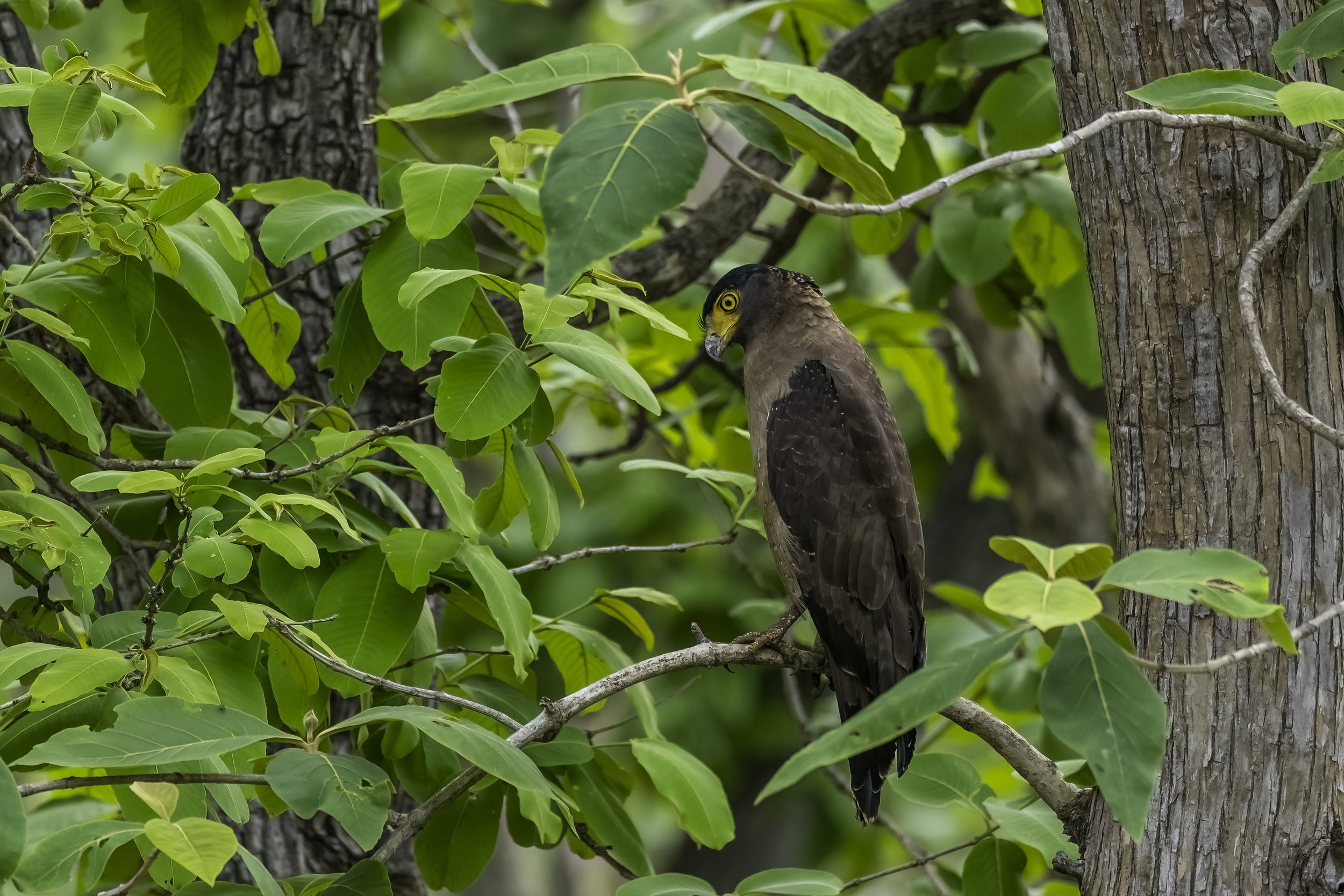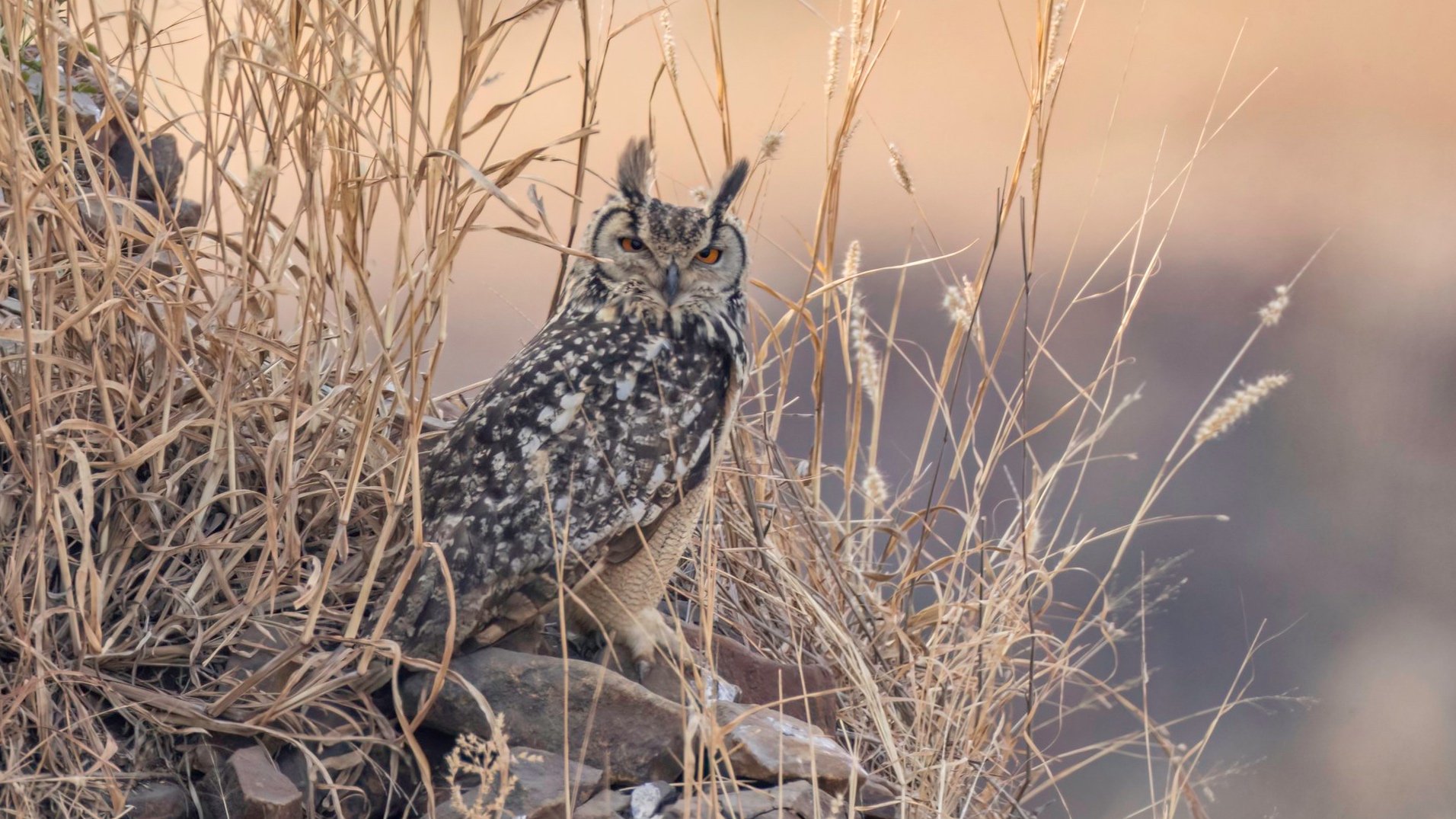Crested Serpent Eagle
Spilornis cheela melanotis
Tipeshwar Wildlife Sanctuary, Maharashtra
Our story today is of a medium-sized bird of prey that is found in forested habitats across tropical Asia. Within its widespread range across the Indian Subcontinent, Southeast Asia and East Asia, there are considerable variations and some authorities prefer to treat several of its subspecies as completely separate species. I have here the sub species Spilornis cheela melanotis which is found across peninsular India.
Tipeshwar
Tipeshwar Wildlife Sanctuary is an isolated national park in the Yavatmal area along the borders of Telangana and Maharashtra. It lies in the Pandarkawada district of Yavatmal stretching over an area of 148.63 sq.kms sprawled among the Patanbori and Parwa ranges of the Pandarkawad Forest Division. The sanctuary is a compact patch of dense forest cover with hilly undulating territory and various types of vegetation that varies with altitude. It derives its name from the "‘Goddess Tipai” who is enshrined in a tiny temple on the hillside near the Tipeshwar Village within the sanctuary area just about 2kms from the Tipeshwar Forest Guest House.
This still relatively unknown fragment of forest was created when the corridors connecting the forested areas of central India broke down due to the exponential increase in human settlements inside and on the fringes of the forests. Tipeshwar has emerged as a successful tiger-cradle in the Eastern Vidarbha Landscape (one of the prominent Tiger Conservation Landscapes of India) and has demonstrated the potential to populate nearby tiger reserves like the Kawal Sanctuary in Telangana. However, like almost all other tiger reserves in India, Tipeshwar too, is plagued by the usual suspects – it is surrounded by densely populated and human dominated landscape with all the associated baggage that unhindered human activity brings - poaching, cattle grazing, trespassing etc., development – illegal mining, highway expansion etc., forest and prey-base degradation, human-tiger conflict etc. There are also a number of villages within the sanctuary area and their inhabitants are dependent on the forest for their livelihood.
But that said Tipeshwar went through an extensive village relocation program creating much needed inviolate spaces for wildlife, especially tigers, in the region. Additional measures such as the introduction of prey like sambar has helped the increase in the population of tigers. The three villages in the sanctuary - Tipeshwar, Pitapingri and Maregaon - mostly dominated by the Kolam tribe were relocated, I think, in 2014-15. Five tribes occupy the Tipeshwar forest region viz., Pardhan, Gond, Kolam, Navbuddha & Kunbi, of which the former three are said to be aboriginal. The total populations of these tribes range from a few hundred to thousand and are seemingly vanishing
So that was about the habitat I have seen this magnificent bird of prey in. Now onto the bird itself.
‡‡‡‡‡
Crested Serpent Eagle
The crested serpent eagle (Spilornis cheela) is a medium-sized bird of prey that is found in forested habitats across tropical Asia. Within its widespread range across the Indian Subcontinent, Southeast Asia and East Asia, there are considerable variations and some authorities prefer to treat several of its subspecies as completely separate species. In the past, several species including the Philippine serpent eagle (S. holospila), Andaman serpent eagle (S. elgini) and South Nicobar serpent eagle (S. klossi) were treated as subspecies of the Crested serpent eagle. All members within the species complex have a large looking head with long feathers on the back of the head giving them a maned and crested appearance. The face is bare and yellow joining up with the ceres while the powerful feet are unfeathered and heavily scaled. They fly over the forest canopy on broad wings and tail have wide white and black bars. They call often with a loud, piercing and familiar three or two-note call. They often feed on snakes, giving them their name and are placed along with the Circaetus snake-eagles in the subfamily Circaetinae.
This is a rather large, heavily built eagle with a dark, white-tipped bushy crest that gives it a distinctive large-headed look. When raised in alarm, the crest frames the whole face, highlighting the bare yellow lores and eyes, making the head look larger and fiercer. The rufous-brown underparts have neatly arranged dark-edged bold white spots. In flight, shows broad rounded wings with a wide black trailing edge. Juvenile predominantly white with dark streaks below; also note dark mask. Commonly seen perched upright in well-wooded areas, with wingtips nearly covering the broad white sub-terminal band on the tail. Its 1-3 note scream is often heard in the forest.
The crested serpent eagle inhabit a wide variety of tropical and subtropical forests with thick vegetation both on the low hills and the plains. They hunt over forests and often close to wet grasslands for snakes and lizards. They have also been observed to prey on birds, amphibians, mammals and fishes. This species is a resident species, but in some parts of their range they are found only in summer. The call is a distinctive Kluee-wip-wip with the first note being high and rising. They call a lot in the late mornings from their perches where they spend a lot of time and they rise on thermals in the mornings.
When alarmed, they erect the crest and the head appears large and framed by the ruff. They will sometimes follow snakes on the ground. They roost in the interiors of trees with dense foliage. They appear to use a sit and wait foraging strategy.
The crested serpent eagle breeding season starts in the late winter. The nest is a large platform made of sticks and is lined with leaves. both the male and female eagles take part in nest building. The usual clutch is one egg. The female eagle incubates the egg. Both the parent eagles take part in raising the chick.
‡‡‡‡‡
Related Posts

















